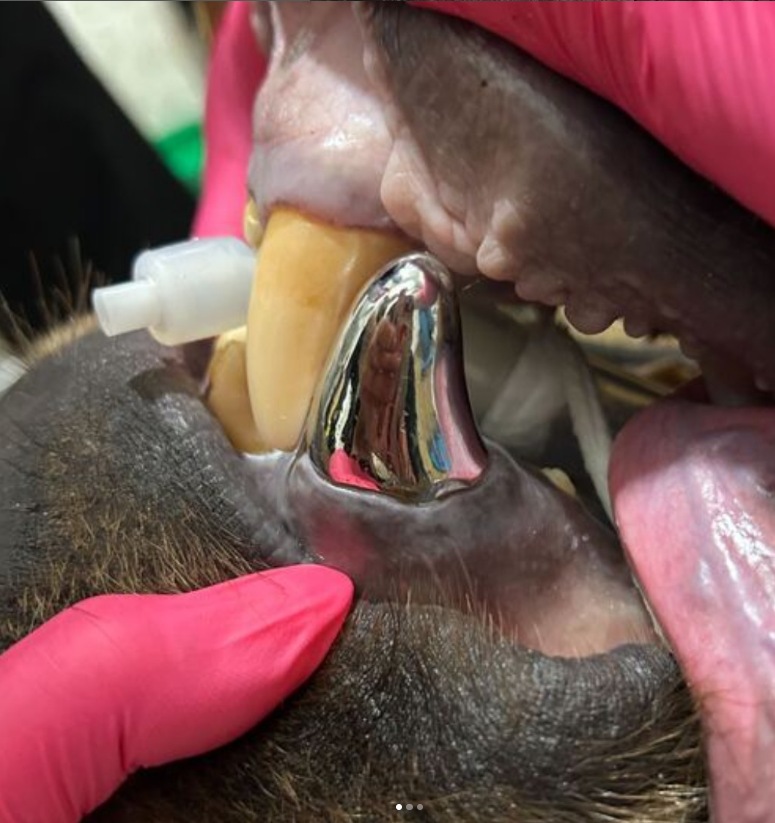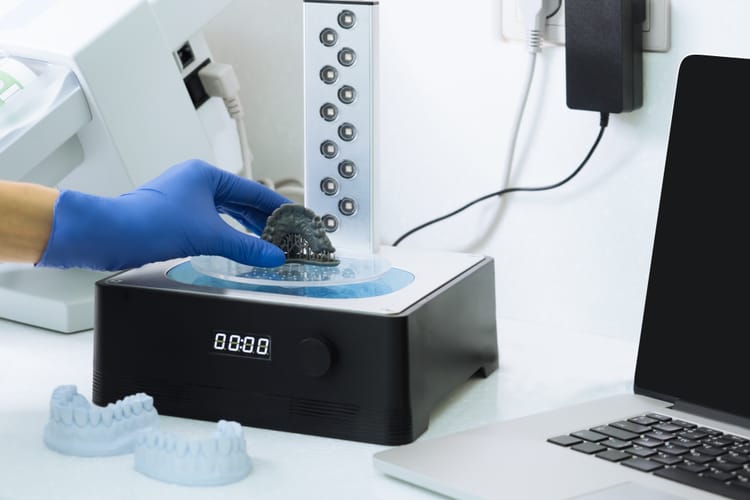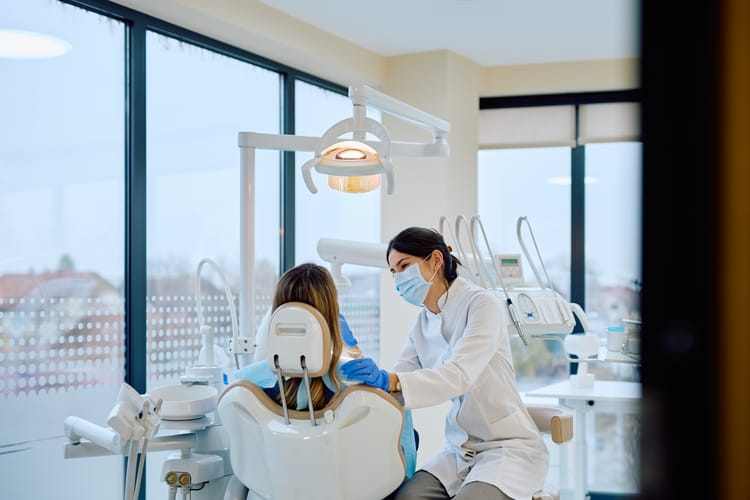Canada's fluoride flip-flop

A fluoride flip-flop is underway in Calgary. This Canadian city removed fluoride from its drinking water more than a decade ago, but now, it's bringing it back.
We also take a look at the biggest dental crown ever placed and drill into the thorny issue of dental misinformation.

Grin and bear it. The largest veterinary crown ever made was placed in an 800-pound brown bear at a Minnesota zoo (shown above). He now has titanium tooth as a part of his impressive grin.
The show must go on. Country singer LeAnn Rimes had a dental mishap mid-concert. She stepped off stage to pop her dental bridge back in before resuming her performance.
New brush on the block. What if you could brush all of your teeth at once? The new, U-shaped Autobrush Sonic Pro gets the job done in 30 seconds.
From chairside to mountaintop. Colorado pediatric dentist Dr. Blake Higgins scaled Mount Everest.
A dentist and Da Vinci. Dr. Rory Mac Sweeney does more than practice dentistry. He also discovered a new mathematical detail in the Vitruvian Man drawing, one of Leonardo Da Vinci's famous works.

‘Younger people are seeking advice from non-experts’
Dental misinformation proliferates online, and it affects how people make decisions and their oral health outcomes. A new survey published by the American Association of Endodontists (AAE) finds that millennial and Gen Z patients are particularly vulnerable to online misinformation. More than half of young adults (58%) have made a health decision based on misinformation from social media and ended up regretting it.
Steven Katz, DDS, AAE president, talks to Dental Bite about the results of the survey and how dentists can play a role in combating misinformation that impacts their patients. —Carrie Pallardy
Were you surprised by the results of the survey on dental misinformation?
Nothing really surprises me about the internet and influencers. It's really interesting, and in some respects, it's kind of scary that younger people are seeking advice from non-experts and making decisions based on what non-experts tell them.
How is this dental misinformation harming patients?
The other part of the survey is that younger people are staying away from the dentist. Over 40% said that they don't go to the dentist unless they have a toothache. So, it's really harmful in that regard. Things tend to get out of control really quickly. Little cavities, if ignored, six months later can become big cavities. Ultimately, root canal therapy is needed.
How have you and your colleagues seen dental misinformation at play in practice? Any examples you can share?
We see it, and we hear it all the time. The AAE has a toolkit for misinformation because there is so much out there.
I have patients come in and say to me, “Well, why should I save my tooth? I heard root canals don't work.” Well, that's not true. That's misinformation. We know that 95% of the treatments that we perform as specialists, as endodontists, are successful.
I don't want to say that part of our job is convincing patients, because I'm not a salesperson. I don't convince patients that they need treatments. I share the appropriate information with patients and then more often than not, they make the right decision: that is to save their tooth.
How can clinicians combat dental misinformation? Any advice for communicating with patients?
I think the most important thing is to present the science and the best way to do that is to direct a patient to a reputable website or organization. So, it doesn't have to be the AAE, although we're obviously the experts in saving teeth. It could be the American Medical Association; they have lots of information about saving teeth. The American Dental Association has information not only about teeth, but also about how it affects your overall health.
Responses have been edited for brevity and clarity.

The role of surcharge programs in dentistry
Surcharge programs enable businesses to pass credit card processing fees to consumers. While this can be a cost-saving measure, Eric Cohen, CEO of Merchant Advocate, warns dental practice owners of the potential risks. Surcharge programs are subject to varying state regulations and additional fees can impact a practice's relationship with its patients.
Why it matters: Dental practice leaders can evaluate surcharge programs to get a full understanding of the benefits and the risks. They can also explore alternative strategies, such as negotiating their processing contracts and incentivizing alternative payment methods. (Dentistry Today)
Understanding why dental hygienists quit
An "Oral Health" article delves into the reasons behind the dental hygienist exodus. The pandemic was certainly a catalyst for many hygienists to consider options like retirement or new careers. But strain caused by a global pandemic isn't the only reason they're leaving roles. Toxic workplaces and the physical strain of their jobs are also motivating factors.
Why it matters: Dental hygienists are a core part of the dental practice team. Understanding they might decide to leave a job, or the profession entirely, can help practices improve retention. (Oral Health)
Bringing fluoride back in Calgary
While some U.S. cities are phasing fluoride out of their water supply, Calgary is reversing course. The Canadian city stopped fluoridating its water in 2011. but after seeing a decline in children’s oral health, officials voted to bring it back.
Why it matters: U.S. Secretary of Health and Human Services Robert F. Kennedy Jr.'s stance on fluoride is continuing to contribute to the fluoridation debate, but there are examples. like Calgary, that demonstrate what can happen when it's removed from public drinking water. (New York Times)

- Stem cells in wisdom teeth could play a role in personalized medicine
- Understanding guided biofilm therapy
- Human urine could be converted into dental implant material
- How better data exchange helps dentists and patients
Don't be a stranger.
💠 Reply to this email to connect with our team.
💠 Forward Dental Bite to your colleagues.



